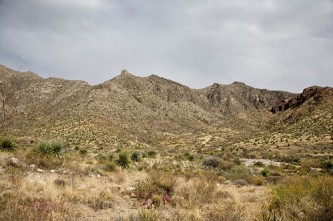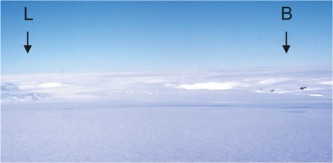
The Franklin Mountains in West Texas (Photo: Charlie Llewellin/llewellin.net)
Scientists have found the strongest evidence yet that North America and Antarctica were once connected.
The international team discovered that rocks collected from the Franklin Mountains in West Texas have the same chemical and geological properties – as well as the exact same composition of lead isotopes – as rocks collected from Coats Land, an area that was once part of the Antarctic continent south of the Atlantic Ocean basin.
How is that possible? When you look at a globe or examine a map of the world, everything pretty much looks familiar to us.
Every nation, island, ocean and continent is where it should be. And it’s been that way for about the last 180 million years.
But, anyone who has ever done a jigsaw puzzle can tell, by looking carefully at the world map, that it appears all of the continents could fit together as one huge supercontinent.
Well, at one time millions of years ago, they did. All of the continents were a part of one great big land mass called Pangaea.
But looking further back into the world’s geological history, scientists say the continents broke up and reassembled six times, forming at least two other great supercontinents before Pangeaa.
Geologists say that, even now, the earth is in the process of a breakup cycle in which the Atlantic and Indian oceans are opening and Iceland is splitting along the Mid-Atlantic Ridge, which is a divergent boundary between the North American and Eurasian Plates..
According to scientists, Rodinia, the earliest-known supercontinent, was formed roughly 750 million years ago and then began to break apart.

Pangeaa splits apart (Image: US Geological Survey)
The fragments of what was once Rodinia then recombined to form Pannotia, approximately 600–540 million years ago. This supercontinent also began to break apart, only to come back together later to form Pangeaa.
So, how do these huge pieces of land break apart and form back together again? The theory of plate tectonics might explain things a bit.
Developed in the late 1950s to early 1960s, the theory of plate tectonics builds upon an older theory called continental drift, which was formulated during the early part of the 20th century. This newer theory suggests that the earth’s outer shell is split into what are called tectonic plates. Depending on who you ask, there are currently seven or eight major plates and many minor plates.
Since they’re basically floating on a lower layer of the earth’s crust, over time these plates bump into and float away from each other.
Just how the plates move about is still a major question, although there are many theories about this geodynamic mechanism.
It was while tracking the movement of our continents, that the international team of researchers found the link between rocks in West Texas and what was once a remote region of Antarctica.

Coats Land with its only rock outcrops, Littlewood (L) and Bertrab (B) nunataks. (Photo: Ian Dalziel)
The study’s authors say this evidence strengthens support for what is called the Southwestern United States and East Antarctica hypothesis (SWEAT), which suggests that North America and East Antarctica were joined in that earlier supercontinent of Rodinia.
In this latest report, scientists found that rocks barely peeking through the ice in Coats Land reflect a former continuation of the North American rift system, which extends across the continent from the Great Lakes down to Texas.
The study considers the tiny Coats Land block of Antarctica to be what they call a ‘tectonic tracer,’ which provides critical clues to the geographic relationships between three of the major continents of earth some 1 to 1.1 billion years ago.
This weekend on the “Science World” radio program, Dr. Ian Dalziel, a research professor at the University of Texas at Austin and a co-author of this study, gives us a bit of a geological history lesson and tells us about this new study and what the team’s research reveals.
Listen to the interview here…
[audio://blogs.voanews.com/science-world/files/2011/08/One-On-One-Dr.-Ian-Daizel-North-America-Antarctica-Connection.mp3|titles=One On One Dr. Ian Daizel – North America-Antarctica Connection]Other stories we cover on the “Science World” radio program this week include:
- MIT scientists may have found a universal antiviral drug
- Nigeria launches two observation satellites into orbit
- Scientists battle to save deep-sea ecosystem
- Battle rages against mosquito-borne disease
- Japan OK’s restart of nuke reactor
- Bat population is declining





















Comments are closed.